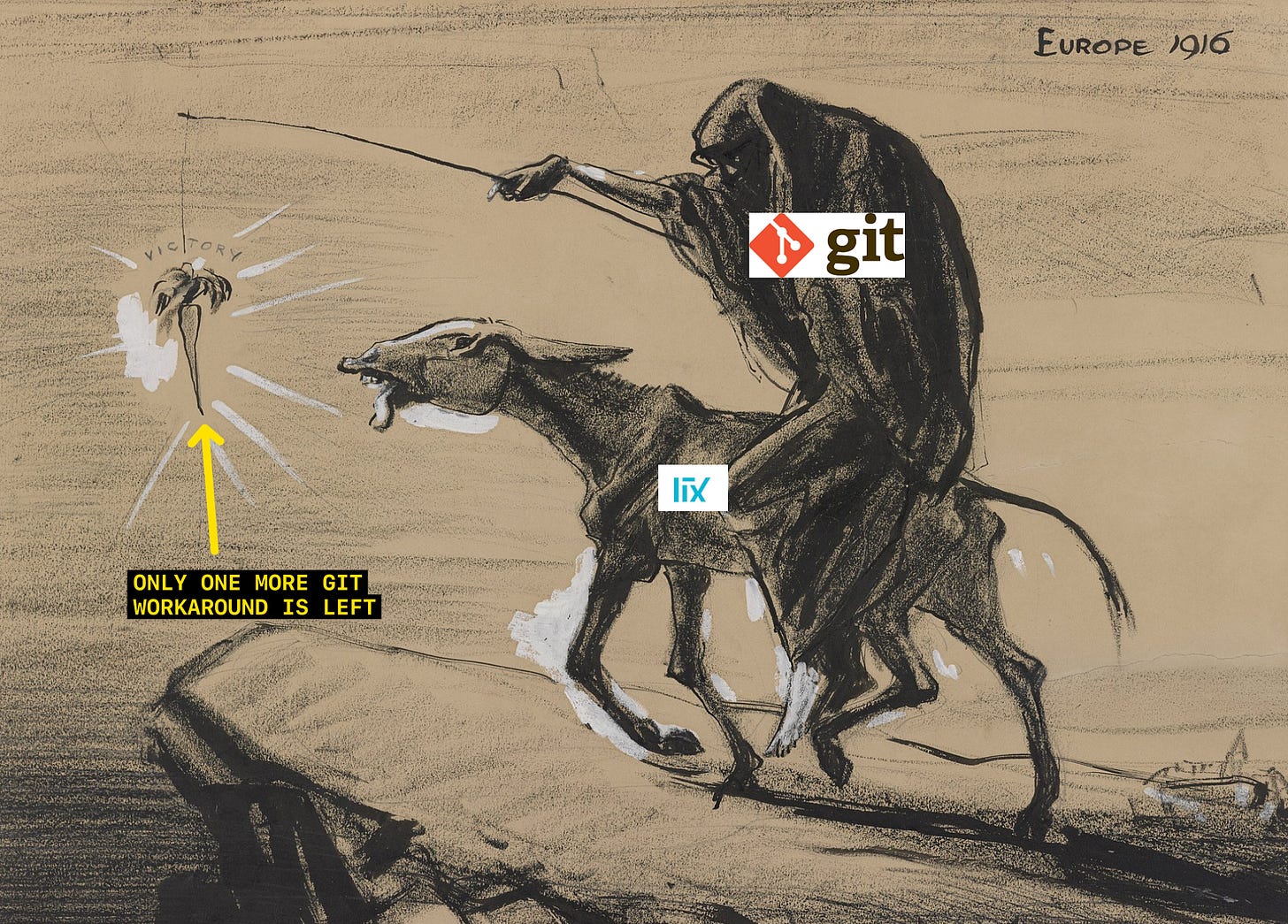Inlang v2.0 release has to wait until lix v1.0
Accelerating both inlang and lix by prioritizing lix.
Dear inlang community,
The release of the inlang SDK v2 (variant support) is blocked until we have a 1.0 release of the lix change control system. As a result, we have shifted the primary focus from inlang to lix. Which means:
The release of the inlang SDK v2 is likely postponed until Jan/Feb next year.
We plan to have a lix 1.0 release by mid-December at the latest.
Until the lix 1.0 release, no new features are added to the inlang SDK or apps.
Try out the inlang SDK v2 demo with Fink
As a sneak peek of what’s coming with v2, check out the Fink v2 demo https://fink2.onrender.com/.
What is lix?
Unbeknown to many of you, inlang has been built on the lix change control system over the past two years. You probably ask yourself right now: “What is lix?”.
Lix is a change control system, a new technology that allows controlling changes in various file formats, such as .csv, .inlang, music, video, architecture, .cad, and more. Controlling changes refers to workflows like change tracking, automation pipelines (CI/CD), or review systems.
You can try out a CSV file demo of lix here.
Inlang needs lix change control to succeed
What makes globalization of software complicated is the required coordination effort. Designers need to know that translators updated translations to adjust their UIs, developers need to redeploy the app if translations change, auditors need to know that a message has changed, … the list goes on.
It was clear in March 2022 [RFC 01] that solving globalization of software requires change control to coordinate changes between teams. It was also clear that git is unsuited for applications, and we would have to develop lix.
Git slowed lix and inlang down
We initially built lix on top of Git, thinking that we ease adoption and benefit from Git’s decade-long development. That turned out to be false. We delayed building differentiating lix technologies. I gave a presentation last week that delaying differentiating technology leads to a death trap for startups. A vicious cycle of building around git instead of building what differentiates lix occurred, consuming most engineering resources. Among the workarounds that we did because of git:
we needed to develop a git-compatible persistency layer to deliver multi-variant support (gendering, pluralization, etc). It took more than 6 months and ended up getting canceled.
were about to build a custom database to sync git, filesystem, and app state

Rebuilding lix on SQLite WASM
Long story short, we are rebuilding lix from scratch using a WASM build of SQLite.
That will lead to perceivable progress for lix, make building inlang faster, and ultimately get to our vision of making globalization of software easy due to change control.
The refactoring will take till the end of the year. Till then, releasing inlang v2 would lead to overhead and distractions. Hence, stay tuned. In the meantime, try the Fink v2 demo to get a feeling of what’s coming.




